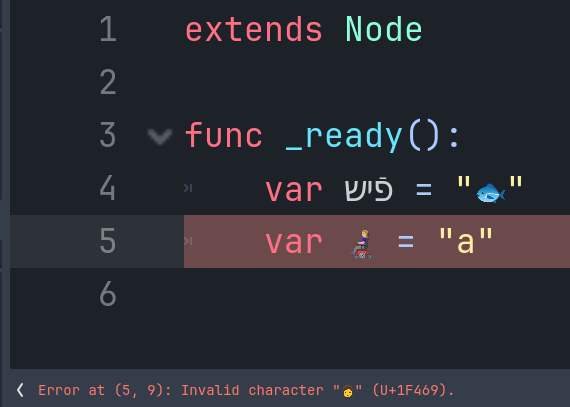Windows also uses linefeeds, they just also add carriage returns.
- 1 Post
- 81 Comments
I’ve been wondering why not
window.chrome == trueorBoolean(window.chrome), but it turns out that the former doesn’t work and that==has essentially no use unless you remember some completely arbitrary rules, and that JS developers would complain that the latter is too long given the fact that I’ve seen javascript code using!0for true and!1for false, instead of justtrueandfalsebecause they can save 2 to 3 characters that way.
Why the double negation?
I always considered making the ice cubes and using them to have water on the rocks to be too much effort for very little benefit.
The problem boobies is referring to is the fact that the tear’s shape should be horizontally flipped when seen from the other side, but it’s just sorta scaled up in the comic.

 2·8 months ago
2·8 months agoI personally use tankie.tube.
But they deal with many knives (and other sharp objects) and super hot liquids, and I imagine if you are working in a kitchen that serves a lot of people, you are also going to be dealing with some heavy stuff (eg. kegs and big pots)
Aren’t chefs supposed to wear steel toed footwear? I wonder if steel toed crocs are common.
Ich glaube, nur wenige befürworten dies. Wenn wir aber Alkohol mit Tabak vergleichen, merken wir, dass Bierflaschen keine Bilder von kaputten Lebern tragen müssen, dass Alkohol in öffentlichen Medien geworben werden darf, und dass es nicht etwas wie ein Rauchoktoberfest gibt.
I like my toots.
That code was C++ or something like that. Not GDScript.
I tested this on Godot 4.2.1. You can write identifiers using a different writing system other than latin and you are allowed to have emojis in strings, but you aren’t allowed to use emojis in identifiers.

I think they exclude some unicode characters from being use in identifiers. At least last I tried it wouldn’t allow me to use an emoji as a variable name.

 9·9 months ago
9·9 months agoThe hover-over text says “Disclaimer: I have not actually tried the beta yet. I hear it’s quite pleasant and hardly Hitler-y at all.”
echoandaliasare both shell commands. If the shell is running (which it obviously still is), those commands should still work, as it does not involve reading data from disk, but from memory.Edit: I just noticed the picture said
cdwas not found, which is also a shell built-in. So, I don’t know.
So also not a struggle session that ends with snuggles?

 16·11 months ago
16·11 months agoI’m not sure, but I think that might have been part of the joke, seeing all the comments here.

 6·1 year ago
6·1 year agoI don’t get the banana trick. What do I do after pinching? I just end up ripping through the skin of one while trying it out.

 4·1 year ago
4·1 year agoOr just always look at the 100g column.



The first two panels remind me of this: https://en.wikipedia.org/wiki/The_Fisherman_and_His_Wife